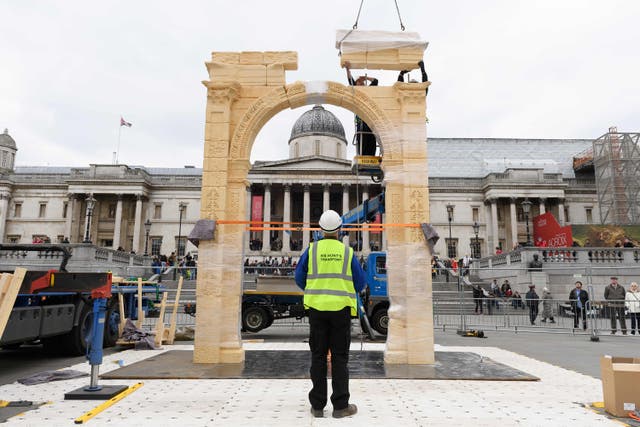(Allegedly) found on a wall in dwellings in Çatalhöyük, Turkey, this painting could be the first known landscape painting done by man. Featuring the first human depiction of an erupting volcano, this landscape was the example of primitive human art. Its initial discovery revolutionized our understanding of life at one of the most important Neolithic settlements. This awe only lasted fifty years, until Eberhard Zangger discovered it is probably a forgery, fabricated by revered archaeologist James Mellaart. This mural was one of many archaeological fakes created in Mellaart’s “forger’s workshop.” Mellaart would seamlessly, and for a while successfully, integrate his fakes into the findings of an excavation.
“He would first acquire a tremendously broad and deep knowledge to develop a coherent historic panorama…[then] Mellaart would fabricate drawings of artifacts … to reinforce his theories.” – Eberhard Zangger
While I am confident in condemning Mellaart’s actions, aimed at deceiving the academic community for personal acclaim, it lends the opportunity to critically examine the actions of modern archaeologists and historians, revealing they aren’t as different to Mellaart’s actions as we may like.
Is Replication Ever Okay?
My initial reaction to the replication or copying of art is – unacceptable. However, upon closer examination, it seems fairly integrated into our society. Posters of the works of Van Gogh and Piet Mondrian are mass produced to adorn the walls of doctors’ offices and college dorms. However, when we take a more critical look at what we are replicating, it reflects not what is culturally significant, but what others have deemed so. Why is the Mona Lisa the most recognized piece of art ever, because someone told us it was important.
Take the Palmyra Arch in Syria. The 1,800-year-old arch was destroyed by an ISIS bombing in 2015. The arch, rebuilt in 2016 by scholars at Oxford, aims to establish a message of strength despite the actions of ISIS iconoclasts.

This is an example of replication we would generally accept as a society. But, by venerating what we want and leaving other objects to ruin, are we the real iconoclasts, rejecting that which does not fit into our idea of culture? Is it up to western Oxford archaeologists to determine that this rebuilt arch (also called an “expensive publicity stunt”) is integral to the “intangible heritage” of Syrians? Like Mellaart, we (re)created an object to serve our own purpose. Mellaart knew what would be revered if he miraculously discovered it at a Çatalhöyük site. Oxford archaeologists similarly appropriated the past to serve their purposes: the praise of rebuilding a, what they deem, culturally important arch.
The Palmyra arch’s recreation formed a powerful narrative about the arch’s cultural significance, a narrative fashioned by archaeologists from half-way around the world.
The Dangers of Context.
We criticize museums for venerating certain objects for their own purposes, calling them central to cultures we hardly understand. How different are these actions to those falsifications of Mellaart?
Often, museum historians make an educated guess or even fabricate a backstory to put a found object into the context of their collections. Sometimes, as art history professor Elizabeth Marlowe explains, curators provide contextual information to support their dating of an object or focus on the iconographic qualities of a piece; reframing objects through their curated lens can conceal information about artifacts’ more recent (and possibly sordid) histories, which may include stories of museum looting or appropriation of cultural relics.
A less subversive, yet equally detrimental, example of modern contexts forced upon an artifact is the Venus of Willendorf mother goddess theory.

Though there is little physical evidence that the Venus of Willendorf was a talisman of fertility in the paleolithic culture, the story was widely accepted. However, upon closer examination, this theory merely reflected the era in which it was studied: the precipice of new age feminism. In the absence of evidence, we imposed our own cultural norms.
An Opportunity for Honest Representation.
We want to believe that Mellaart’s actions are totally anathema to what scholars and museums do today. Society thinks museums bastions of truth. However, Museum curators, the Oxford archaeologists, and the Venus researchers all act like it is their prerogative to fill the void of fact with their own self-serving values, appropriating the past to further whatever narrative they are trying to perpetuate, and sell more exhibition tickets. In truth, there are only degrees of difference between the reflexive interpretation and contrived context perpetuated by the aforementioned entities and Mellaart the forger himself.
If society wishes to remedy this association, we have an obligation to more honestly represent historical artifacts and challenge what is presented “as facts” in the status quo.
SOPHIA FRIGULETTO is a member of Colgate’s class of 2024 from Dallas, Texas. She intends to major in Economics but also harbors a passion for art and art history.
